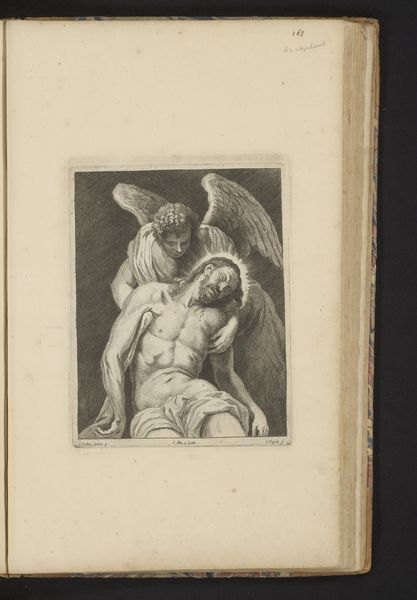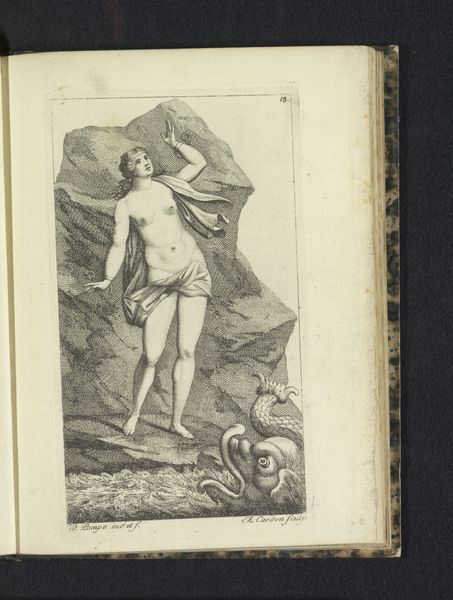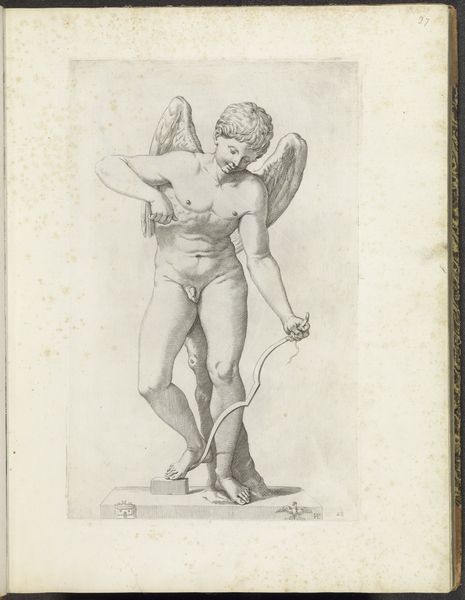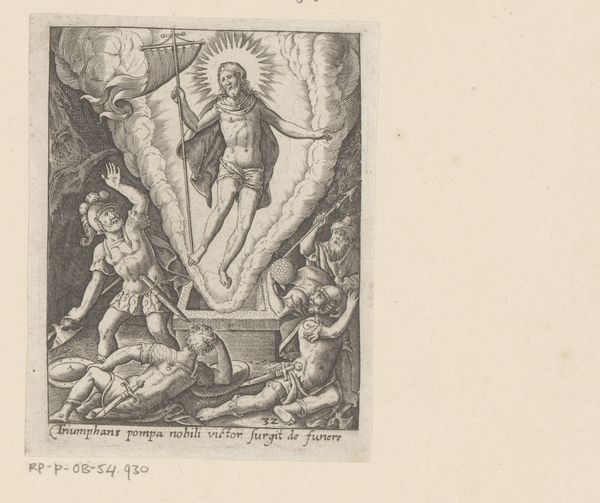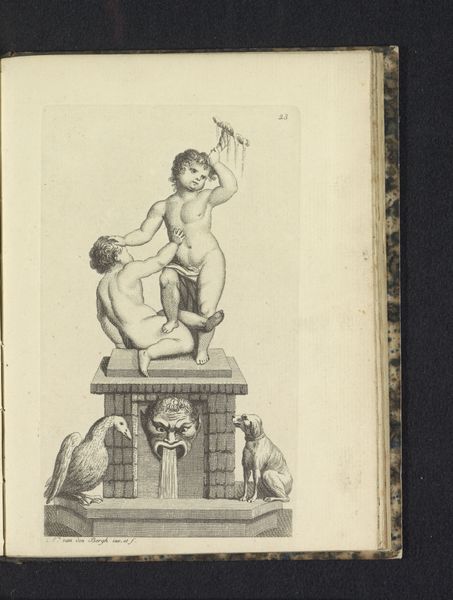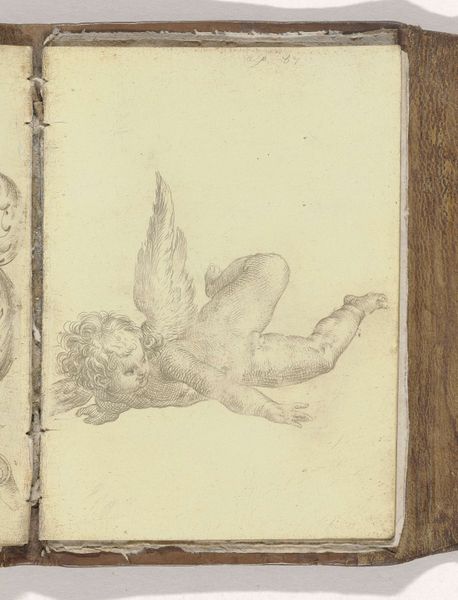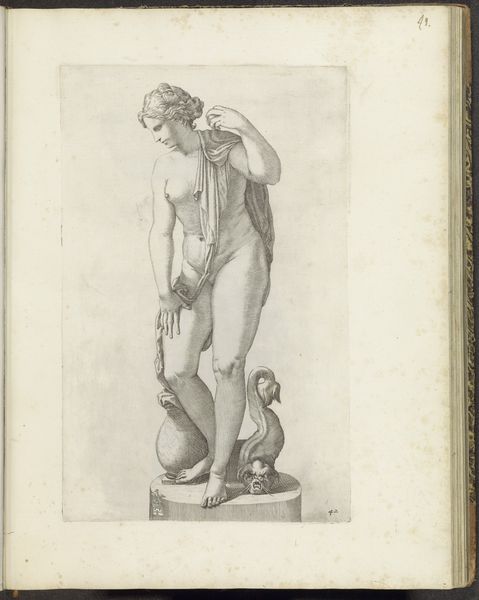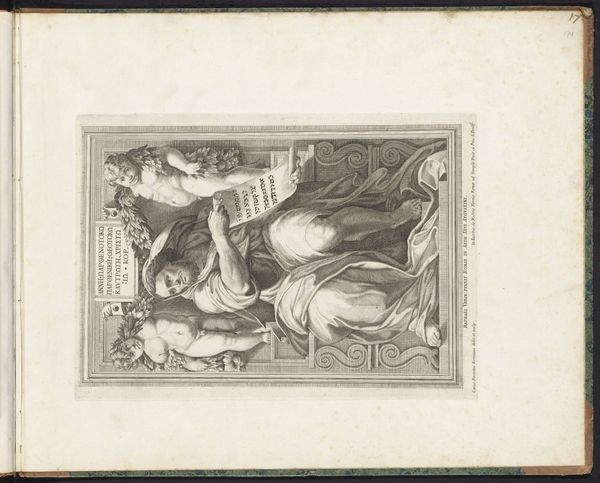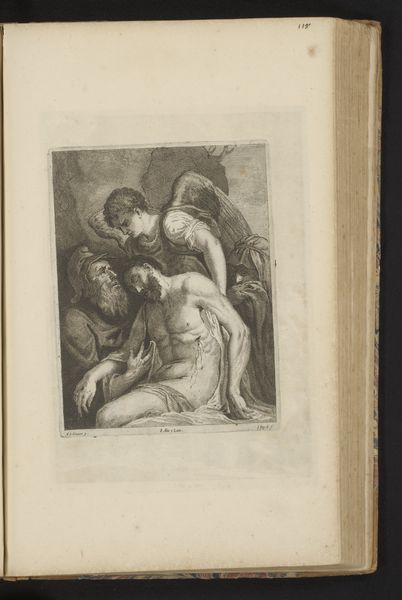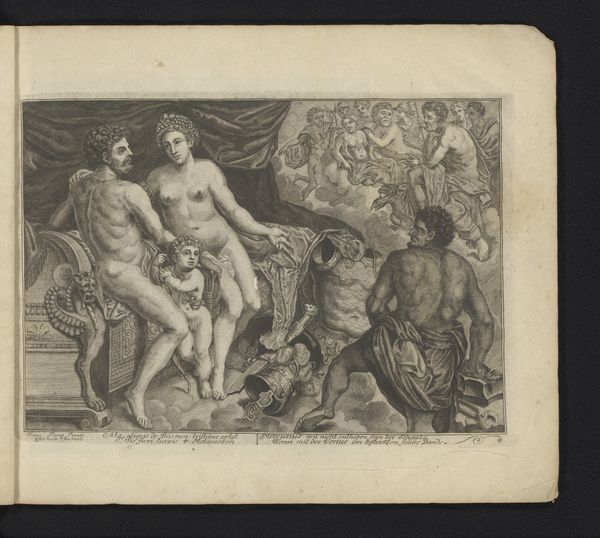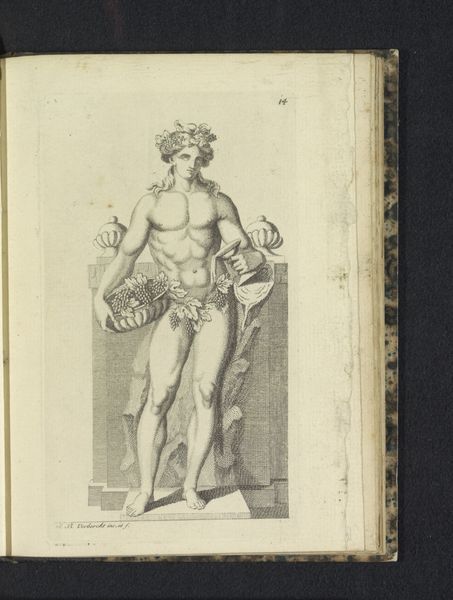
print, engraving
#
neoclacissism
# print
#
figuration
#
history-painting
#
engraving
Dimensions: height 171 mm, width 97 mm
Copyright: Rijks Museum: Open Domain
Curator: Let's turn our attention to a piece by Antoine Alexandre Joseph Cardon, created between 1772 and 1773: an engraving titled "Saturnus en Cybele". Editor: Whoa, this image has such a powerfully dark vibe! The swirling energy contrasts so strikingly with the neoclassical style—it's unsettling, in a captivating way. Curator: Absolutely. Cardon draws upon classical mythology to address anxieties related to power and generational conflict. We see Saturn, also known as Cronus, the god of time, devouring his own child. Cybele, the mother goddess, desperately tries to intervene. The positioning of all three figures in the composition tells of intense struggle. Editor: It totally nails that raw emotional charge! I'm wondering what it means to depict it now; is Cardon perhaps speaking of societal ills of the time through myth, through showing that even deities could commit dark acts? Curator: Precisely. Within the context of late 18th-century Europe, ideas surrounding divine authority and the power of monarchs were very fraught. "Saturnus en Cybele" participates in that discourse, by reimagining these narratives in a way that reflected shifts in how power could be both perceived and wielded. It also opens up a crucial perspective of gender within classic art that had, until then, seemed patriarchal. Editor: Hmm. That's an angle that resonates so strongly today too. I mean, the terror of absolute power, the vulnerability of the young... It all feels too current for something from so long ago. It goes far deeper than it initially suggests, showing what one is able to hide under aesthetic presentation. Curator: And it prompts us to consider not just the aesthetic quality of the work itself, but also how artistic mediums become tools for disseminating complex socio-political messages that continue to matter now. Editor: Seeing that engraving, you start thinking, does mythology really stay myth, or does it repeat? It's like looking into a dark, ornate mirror... makes me think hard! Curator: Indeed. Cardon's image invites us to probe into our present, through a rich, layered depiction of the past.
Comments
No comments
Be the first to comment and join the conversation on the ultimate creative platform.
